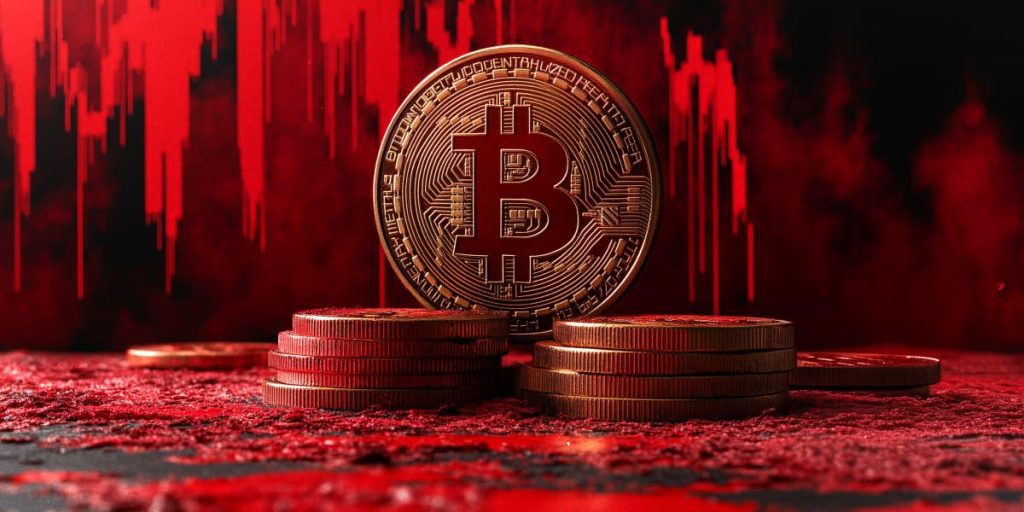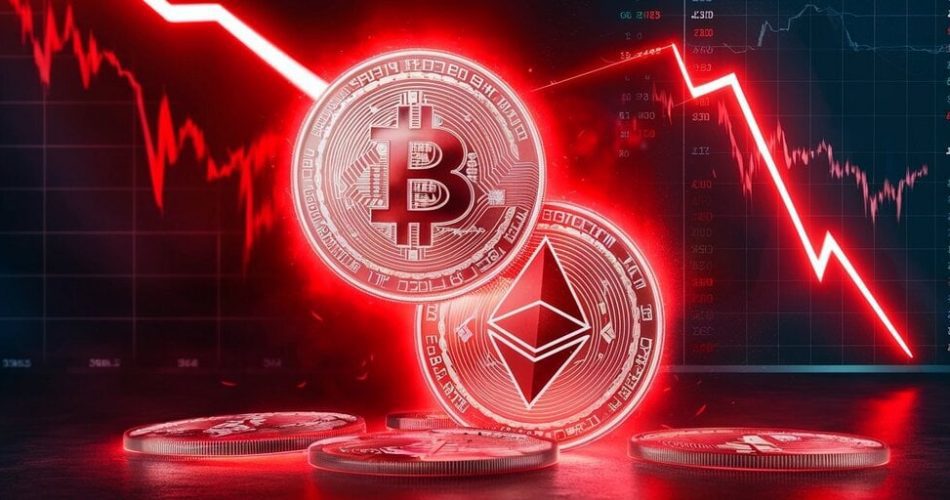Freeward Insights
Crypto Market Crash 2025: $19B Liquidations, Why Bitcoin Dropped & A Recovery Playbook
A data-first, 3,000-word investigation into the October 2025 crash — what triggered it, how the $19B+ liquidation wave worked, the on-chain metrics and ETF flows to monitor, scenario probabilities, and a step-by-step playbook for readers who want to preserve capital and earn using Freeward (no investment needed).
Join Freeward — Start Earning Now

Contents
- Executive summary
- Market build-up: what set the stage
- The trigger: geopolitics & the instant shock
- The liquidation wave explained
- Historical comparisons
- Live signals & on-chain metrics
- Scenarios & probabilities
- Freeward playbook — risk-tiered steps
- Practical templates, charts & tables
- FAQ
- Conclusion
Executive summary
In brief: Over the first half of October 2025, Bitcoin climbed to near $125,000 as ETF inflows and institutional demand accelerated. Within days, geopolitically-driven market stress caused a rapid repricing: Bitcoin dropped toward the low $100k range and aggregated reports show roughly $19 billion in forced liquidations across derivatives exchanges.
The result was a liquidity cascade: falling prices triggered margin calls, automated positions closed (liquidated), which added selling pressure and widened price gaps. The speed, scale, and institutional participation make this a defining event for 2025 markets.
Quick takeaway: If you’re not a professional trader, prioritize capital preservation. Use non-speculative earning channels (like Freeward) to build rewards and optional crypto exposure without risking principal. Start here.
1. Market build-up: what set the stage
The crash didn’t appear out of nowhere. It followed a classical build-up of liquidity and leverage that looks familiar to anyone who’s studied previous crypto cycles, but with two modern twists: robust ETF flows and rapid derivatives market growth.
Key structural factors before the crash:
- ETF inflows & productization: Institutional capital entered via spot ETFs and similar vehicles, increasing the pool of capital sensitive to macro news.
- High derivatives open interest: Retail and institutional traders used leverage to amplify returns — this concentrated risk on the long side.
- Momentum strategies & FOMO: Social media and algorithmic funds amplified buying pressure on the way up.
- Thinner books off-hours: Crypto is 24/7; larger moves can occur when liquidity providers step back.
These conditions produced a fragile market: when capital is highly concentrated on one directional bet (longs) and leverage is high, even modest negative news can cascade into a large correction.
| Metric | Indicator | Risk interpretation |
|---|---|---|
| BTC price ~ $125,000 | Parabolic momentum | Overbought; weak shock resistance |
| Derivatives OI high | Elevated leverage | Margin cascades likely |
| ETF inflows | Institutional capital | Quick inflows → quick outflows |
| Social volume spike | Retail FOMO | Contrarian caution |
2. The trigger: geopolitics & the instant shock
On Oct 9–10, 2025, a set of geopolitical announcements — notably high tariffs and tightened export controls between major economic powers — changed macro risk calculus. Global risk assets repriced in hours. When such a macro shock lands on an over-levered crypto market, the result is rapid unwinding.
Even small changes in macro expectations can be amplified into large moves in leveraged, thin markets. That amplification is what created the most intense liquidation wave.
Timing matters: the shock struck when market liquidity was concentrated and many leveraged positions were close to maintenance margins. Price gaps expanded, and forced liquidations began.
3. The liquidation wave: how $19B vanished
Liquidations are automatic — when margin falls below required thresholds, exchanges close positions to protect lenders. That mechanism keeps margins but also feeds market sell orders during fast moves.
What happened during the wave:
- Initial sell pressure caused a price drop.
- Margin balances hit maintenance thresholds; exchanges liquidated long positions.
- Liquidation orders hit the order books, needing fills at whatever market price — pushing the price lower.
- Lower prices triggered more liquidations — a positive feedback loop.
| Asset | Estimated liquidations | % of total |
|---|---|---|
| Bitcoin (BTC) | ~$5–7B | ~30–40% |
| Ethereum (ETH) | ~$3–5B | ~15–25% |
| Altcoins (combined) | ~$6–9B | ~30–50% |
Important: these are aggregated, best-estimate numbers across public exchange data; exact distribution varies across providers and each exchange’s liquidation algorithm.
One feature of this event was speed. In a handful of hours, the market recycled billions in positions. That speed magnified realized losses and forced many retail and smaller funds into steep drawdowns.
4. Historical comparisons: 2025 vs earlier crashes
The best way to learn is to compare. Here’s how the October 2025 event stacks relative to past corrections.
- 2021 corrections: often retail and meme-related, slower institutional footprint.
- 2022 drawdown: macro-driven (rate hikes, liquidity), sustained and multi-month.
- 2025 crash: very fast, large pool of institutional capital, derivatives concentration — unique in speed and ETF-era dynamics.
The rise of ETFs and easy institutional access changed the market structure: flows can be much larger and faster, and that changes the dynamic between spot and derivatives liquidity.
5. Signals & metrics to watch (live dashboard guide)
Whether you’re protecting capital or planning to re-enter, these indicators are the fastest, most actionable signals to follow.
ETF flows
Daily net inflows/outflows to spot ETFs show institutional allocation appetite. A sustained return of inflows is a positive sign; sharp outflows sustain downward pressure.
Derivatives open interest (OI)
Falling OI during price declines suggests deleveraging (healthy). Rising OI with price down suggests short accumulation (bearish).
Funding rates
Funding rates (per exchange) turning deeply negative indicates short dominance and desperation; normalization is bullish.
Exchange reserves (supply on exchanges)
Large outflows from exchanges to cold wallets often indicate accumulation; large inflows suggest selling intent or liquidity provision.
On-chain accumulation
Long-term holder accumulation (addresses holding for 1+ year) is a strong bullish signal when it rises after corrections.
6. Scenarios & probabilities — plan for each path
Assigning probabilities isn’t perfect, but it helps turn narrative into actionable plans. Update probabilities as signals (ETF flows, funding, reserves) change.
| Scenario | Probability | What it looks like | What to do |
|---|---|---|---|
| Base | 55% | Consolidation between $105k–$120k over weeks; slow recovery if inflows return. | Preserve / DCA small amounts, monitor ETF flows. |
| Bull | 25% | V-shaped recovery to new highs within 1–2 months if macro noise eases and inflows persist. | Scale positions modestly with trailing stops; watch funding for squeezes. |
| Bear | 20% | Break below $100k, deeper correction if macro shock persists and flows reverse. | Move to stable assets, use hedges, prioritize capital preservation. |
Use these scenarios to set rules: what will trigger entry, how much to risk, and what evidence will force you to change the plan.
7. Freeward playbook: earn, don’t gamble
Most readers will benefit from a practical blueprint: preserve capital, use non-speculative earning, and plan for opportunistic re-entry if you invest later.
Conservative — Preserve capital
- Keep cash or stablecoins. Avoid margin and leverage entirely.
- Use Freeward to earn rewards, PayPal cash, gift cards, or crypto without trading risk. Sign up here.
- Keep emergency liquidity equal to 3–6 months of living expenses.
Balanced — Long-term accumulation
- Dollar-cost average (DCA) a small allocation over 4–12 weeks.
- Define rebalancing rules and limit any single allocation to a percent of net worth.
- Consider small option hedges if available and affordable.
Aggressive — Traders
- Strict position sizing: risk no more than 1–2% of capital per trade.
- Avoid heavy leverage during volatile macro regimes.
- Use order book asymmetry and funding signals to spot squeezes.
If you’re not a professional trader, migrating time spent watching charts into earning tasks on Freeward is usually a higher expected-value choice during such volatile windows.
Freeward CTA: Join Freeward — earn while the market resets (no investment required).
8. Practical templates, charts & tables (copy + paste)
Use these templates to keep discipline. Copy them into your notes.
Daily monitoring checklist
- ETF net flows (daily)
- Derivatives funding rate & OI by exchange
- Exchange inflows/outflows (BTC & ETH)
- Social sentiment spikes (Twitter/Reddit)
- On-chain accumulation metrics (large addresses)
Entry rule template
- Wait for at least two confirmation signals (ex: positive net ETF inflow + falling exchange reserves).
- DCA into position: 25% of planned allocation each week for 4 weeks.
- Set a maximum drawdown stop (e.g., -20% from average entry) and revise if new evidence appears.
dca-schedule.png]
FAQ — concise answers for readers
Q: Why did Bitcoin crash so fast?
A: The immediate cause was macro/geopolitical news that shifted risk pricing. The deeper cause was one-sided leverage and ETF/derivatives concentration; forced liquidations converted price drops into a cascade.
Q: Was $19B really liquidated?
A: Aggregated reports across data providers indicated roughly $19B in forced liquidations during the most severe hours. Exact totals vary by data provider and exchange.
Q: Should I buy the dip now?
A: That depends on your risk tolerance. Long-term investors might DCA. If you’re unsure or need capital protection, earn via Freeward and wait for clearer signals — you can still benefit from crypto without risking principal.
Conclusion — prepare, preserve, and execute
This correction is a reminder: markets climb on leverage and confidence and fall on fear and forced selling. For readers who are not professional traders, the highest-probability option is to preserve capital and build value using low-risk channels. Freeward offers a practical alternative: complete tasks, earn gift cards, cash, or crypto rewards, and avoid the emotional risk of trading during a flash crash.
Join Freeward — Start Earning While Markets Reset →
Updated Oct 12, 2025 • Freeward Editorial • We update this article as new data becomes available.
Crypto CrashLiquidationsEarn Online
Quick links
Resources
